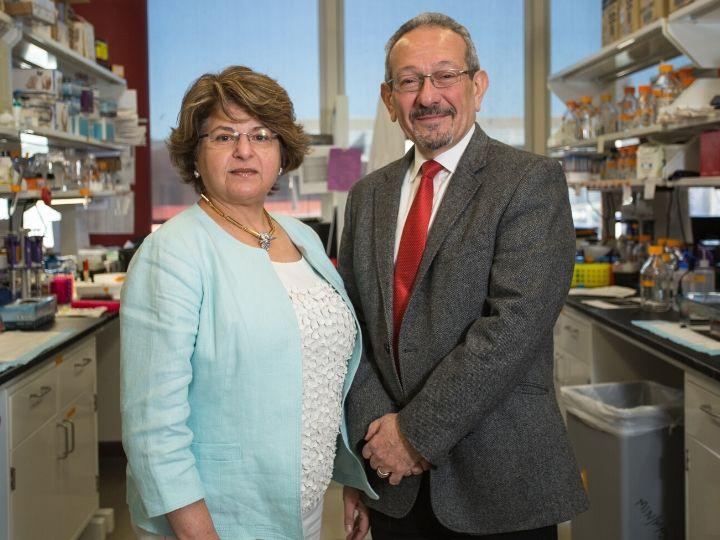University of Houston research team examines eye disease with $2.5 million award

Credit: University of Houston
Four words you never want to hear from the eye doctor are retinitis pigmentosa and macular degeneration. Both are genetic disorders that can cause loss of vision and neither has a cure. A team of biomedical researchers at the University of Houston is now tackling both eye diseases by exploring a protein in the retina that links them: peripherin2 (prph2).
“Mutations in peripherin 2 are associated with a variety of retinal degenerative diseases, including retinitis pigmentosa, cone-rod dystrophy and multiple forms of macular dystrophy,” said Muna Naash, John S. Dunn Endowed Professor of biomedical engineering and principal investigator. “Peripherin2 mutations can also cause secondary defects in adjacent tissues including the retinal pigment epithelium and choroid, which hampers the development of therapeutics for these diseases.”
When healthy, prph2 is essential for the structure and function of the outer segments of the retinal photoreceptors. The two types of photoreceptors involved in sight are rods, which work at low levels of light, and cones, which are used to see color. Damaged rods cause retinitis pigmentosa; degeneration of cones causes macular degeneration.
“We are focused on advancing current knowledge on the role of peripherin2 in outer segment rim and disc formation, and in understanding the pathogenic mechanisms of associated diseases,” said Muayyad Al Ubaidi, professor of biomedical engineering and project partner. The work is funded by a $2.5 million grant from the National Eye Institute.
“Periphen2 is an incredibly exciting protein to study and understand because, depending on which part of the protein has a mutation, it can cause different phenotypes in each patient,” said Al-Ubaidi.
Prph2 does not always work alone. It has a partner, a photoreceptor-specific gene called ROM1 (rod outer segment membrane protein 1). The two proteins combine in different ratios, subsequently causing different diseases.
In prior research, Naash found that by changing the ratio of prph2 and ROM1 she could convert cases of the more dangerous macular degeneration to the less severe retinitis pigmentosa.
“We found we could convert the pattern dystrophy or macular degeneration phenotype to retinitis pigmentosa phenotype by modulating ROM1 level,” said Naash. This suggests that elimination of the mutant protein will be a pre-requisite for any curative therapeutic strategy.
Naash and Al-Ubaidi will examine how different mutations in prph2 lead to different disease phenotypes; what contributes to variability among patients carrying the same mutation; what role ROM1 plays in these events; and, how to shift prph2-associated severe phenotypes to milder ones.
###
Click here for more information on Naash and Al Ubaidi’s 44-year marriage in life and in the lab.
Media Contact
Laurie Fickman
[email protected]
713-743-8454
Original Source
https:/




